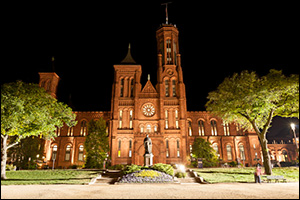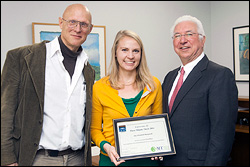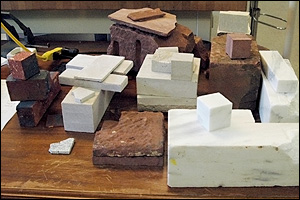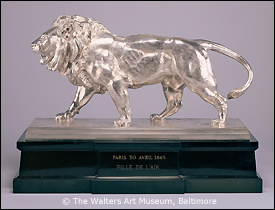News Story
MSE Professors to Present Historical Preservation Work at Smithsonian-UMD Celebration

Image: Smithsonian Institution
Department of Materials Science and Engineering (MSE) professor Ray Phaneuf and adjunct professor Richard Livingston will present their work on the preservation of historical objects at the Smithsonian Institution's Seed Grant Celebration, to be held Wednesday, October 30 at the Smithsonian Castle in Washington, D.C. The event will showcase research supported by the University of Maryland/Smithsonian Seed Grants for Research Program.
Livingston will present the current results of his collaboration with the Smithsonian's Museum Conservation Institute. The partnership is exploring the feasibility of a portable prompt gamma neutron activation device for the nondestructive assessment of stone buildings, monuments and artifacts in danger of deterioration from the effects of moisture. The team has tested samples of the types of brick, sandstone, and marble used in the Smithsonian's own historic buildings, as well as in the National Cathedral, the Arlington Cemetery Amphitheater, and the Jefferson Memorial. The goal is to enable conservators to accurately determine a structure's condition, monitor it over time, and create effective preservation strategies, on location and without having to drill or cut to obtain a sample.
Phaneuf's group has previously worked on new ways to preserve silver art and artifacts using atomic layer deposition (ALD), a technique that allows them to create tarnish-blocking, nanometers-thick coatings that won't damage or alter the appearance of the metal. Now, supported by a University of Maryland/Smithsonian Seed Grant, the group is applying the concept to patina, the natural, greenish coatings that form on untreated copper, bronze and brass.
"The desirability of the existing patina is a judgment which is made by the conservator or museum curator who might consider it to be a mark of the age or history of the object," Phaneuf explains. "The choice to conserve a patina is complicated, because its component minerals can diffuse into and react with the coating layer." He and his colleagues will determine how surface oxides, sulfates and other patinas limit the effectiveness and reversibility of their ALD coatings.
Published October 29, 2013














